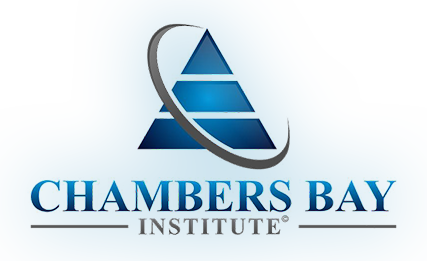Learning to See What Isn’t There by Bruce LaRue, Ph.D.
“The only thing worse than being blind is having sight but no vision.” Helen Keller
 Let me tell you how I see the world. I have been legally blind since I was a young boy. I can recall just beginning to learn to read when my outer world of vision grew dim. From that time forward, I was unable to see detail such as the printed word.
Let me tell you how I see the world. I have been legally blind since I was a young boy. I can recall just beginning to learn to read when my outer world of vision grew dim. From that time forward, I was unable to see detail such as the printed word.
Through a combination of focused intention and the neuroplasticity of the human brain, what I could not see with my outer eyes, I learned to conceive with my mind’s eye. I now help leaders see a future yet to be born, channeling the collective energy of others to make it a reality. This results in leaders seeing their own world differently, changing both themselves and the organizations they lead.
Because traditional employment was out of reach, I had to forge a different path. I started my own businesses, achieved a Ph.D., became a graduate school professor, and I now coach, lecture, and teach leaders around the world on leading change. While I was unable to serve my own country in the military, I am privileged to advise leaders in the U.S. Department of Defense, including Army commanders. While I am not an engineer, I have worked with many top engineers on highly complex initiatives within global high-tech organizations. While I never led a city or government agency, I have advised many of those who do. I now serve as President of Chambers Bay Institute, where our mission is to build leaders who can lead change in their organizations, their communities, and their countries.
My life and work are a testimony to this time-honored truth: To change the world, you must first change how you see the world.
Losing My Sight and Gaining My Vision
As early as age seven, the center of my retina, or macula, had largely deteriorated, leaving my peripheral vision mostly intact. This had a tremendous impact on how I see the world, both physically and cognitively. The macula is responsible for perceiving detail and color. The peripheral area around the macula, on the other hand, sees the world as an integrated whole, detecting patterns and movements.
I have learned to see the world more as an integrated whole rather than a collection of
independent parts. Seeing patterns of connections between thoughts and ideas has helped me to understand the world in terms of systems of complex interdependencies. Much like the challenges and crises we face today, they cannot be seen in isolation nor solved independently of one another. Instead, in our communities, at work, and in society, we need leaders who can build coalitions of people to create change in our complex world. In short, we need Integrator Leaders.
Learning to See What Isn’t There
Great leaders lead change; that is, they don’t simply react to change―they create it. Throughout history, these leaders seem to have a unique ability to see what isn’t there and to inspire others with their vision to create the greatest achievements of our time. My question is always this: how do these exceptional leaders captivate the imagination of others to organize toward a common purpose? This question has become the focus of my life and career, and it is a quest I share with my business partner and co-author, Jim Solomon.
After retiring as an Army Colonel, Jim served in various executive leadership positions in the private sector. From his beginning as an Eagle Scout and member of the Corps of Cadets at the University of North Georgia, 2 Jim focused his career on developing leaders. While he grew up in the suburbs of Washington, DC, it was his time in the Blue Ridge and Smoky Mountains that taught Jim to see the world differently. Whether hiking for pleasure or training as a soldier in this beautiful yet rough terrain, Jim learned valuable lessons about the dynamics of working with teams in both favorable and challenging conditions. One lesson was that the best leaders are those who influence the team rather than dictate to them. Another was that, while climbing to the top of the mountain may be a worthwhile goal, any enduring accomplishment is all about we, not me.
On 9/11, the hijackers struck the office Jim once occupied at the Pentagon, killing many of his colleagues. This deeply affected how he saw the world, reigniting his commitment to develop a new generation of capable leaders.
Our common interest in developing leaders allowed us to draw from one another’s deep
experience to create Chambers Bay Institute. Today, our certified team of consultants are involved in training and developing thousands of leaders across a wide range of organizations around the world. The lessons we have learned through our combined decades of experience and research serve as the basis of our methodologies and principles and is captured in our recent book, “Seeing What Isn’t There – A Leader’s Guide to Creating Change in a Complex World”.
Whether you are launching a strategic initiative, improving procedures, creating an Internal Development Path for your workers, reinforcing your cyber defenses, building a new urban center, or rebooting your country, leadership is about leading change. Leading must involve change, since maintaining the status quo would mean going backward as others evolve around you, leaving you, your organization — and perhaps your entire society — behind.
In our work, we share our proven and highly adaptive method for integrating and aligning the efforts of others to achieve shared goals. My dream is to continue to help others to see their own world in new ways.
Bruce LaRue, Ph.D.
Chambers Bay, Washington
Learn more from our team at Chambers Bay Institute and our latest book “Seeing What isn’t There – A Leader’s Guide to Creating Change in a Complex World”
www.chambersbayinstitute.com

© All Rights Reserved Chambers Bay Institute 2019
You must be logged in to post a comment.